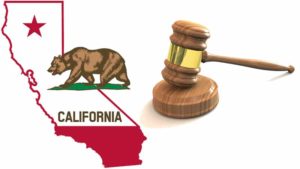California Workers Compensation System Development
California Workers Compensation History

California Workers Compensation System Development
California Workers Compensation System Development – The laws that comprise California's current workers’ compensation system developed over time. The origins of the system trace back to the industrial revolution in the late 19th century. In addition, as mass production and factories increased, many workers fell victims to employers’ disinclination to take responsibility in cases of worker injuries. Those people who sustained industrial injury lost their jobs and their disability hindered their ability to find subsequent employment. This placed a heavy burden on society both morally and in the form of lost productivity where formerly healthy people were forever taken from the labor force. As labor market expanded, society as a whole developed a robust system to help keep it's workforce healthy and to fulfill its moral obligation to take care of its own.
Common Law Liability For Industrial Injury Cases
In the 1800s through 1900s, there was no comprehensive system to help people hurt at work. Instead, there was a civil liability system governed by the common law. Under such system, work injuries were subject to civil jurisprudence. In addition to the fact that all lawsuits filed by injured workers were considered negligence actions seeking civil damages, they were extremely difficult to prove.
The Common law was harsh; not only because the employee had to prove negligence, but also because of the three defenses even in the face of proven negligence. These defenses freed employers from paying injured employees:
- Assumption of risk: workers were presumed to have free will to expose themselves to a job that has a predictable hazards and therefore assumed the risk of damage.
- Fellow Servant rule: employers were not responsible in cases resulting from a fellow worker’s negligence.
- Contributory Negligence: employers were not considered liable when the employee contributed to negligence.
Evolution to Current Industrial Compensation Law
At the beginning of the 20th century, California amended the Common Law and created a new scheme known as the Compensation Bargain as the template for the modern system.
- The Roseberry Act of 1911 – abolished certain defenses 1 and 2 and modified defense 3, in addition to establishing the voluntary coverage.
Learn California Work Injury Laws
- The Boynton Act of 1913 – Required all employers to provide coverage regardless of negligence, and claims were no longer subject to the jurisdiction of civil courts, instead to a special tribunal called the Industrial Accident Commission (IAC) until its name changed in 1966 to be The Workers’ Compensation Appeals Board (WCAB). It also established the State Compensation Insurance Fund to insure companies.
- Workmen’s Insurance and Safety Act of 1917 – Considered the representation of the evolution, this act made coverage compulsory. It barred statuary help if intentionally self-inflicted, decreasing employee award by 50%. And increased 50% the accident results of employer’s mischief. This act represents the foundation for the labor code used today after it was codified in 1937.
- Name change in 1974 – Switched the gender-specific name to a gender-neutral one, from Workmen’s to Workers.
- The Reform Act of 1989 – Although did not go into effect until 1990, it changed the types and amounts of money received.
- Changes of 1993 – Limited the compensability of medical-legal and rehabilitation expenses as well as psychiatric and post-termination claims. Changed how permanent disability issues are tried and required companies to provide an alternative or modified work for employees who are permanently disabled.
- The increase of benefits in 2002 – Increased money for temporary and permanent disabilities, as well as death benefits, and allowed parties to settle vocational rehabilitation.
- Reform of 2003 – Required standards for the types and extent of care provided for compensated employees, established a Utilization Review process (UR) to avoid medical abuse, and replaced vocational rehabilitation with a supplemental job displacement benefit also known as a Voucher.
- Senate Bill 899 in 2004 – A conservative reform that changed previous help of the temporary and permanent disabled employees. It established a medical Provider Network (MPN) to limit physicians that may treat injured employees.
- Senate Bill 863 in 2012 – Although became operative in 2013, it increased permanent disability benefits, created a $120 million return-to-work program and an independent medical review process, eliminated questionable claims and litigation and made it harder for employees to see physicians outside the MPN.
Current Advantages of Compensation Laws
For employers: Immune from damages and payments for pain and suffering that they could be liable for under old rules. Pays for more accidents and hazards but in lesser amounts. Not confronted with lawsuits that hinders their ability to continue the operation of their business; and absolute protection from tort liability where adequately insured.
For employees: Not required to prove negligence-based injuries (no fault) in order to obtain benefits. Entitlement to receive medical care, temporary disability, permanent disability, money for retaining and death benefits in the case of death. Helps the employee recover and become a productive member of the workforce again.
For society: The cost of workplace accidents and hazards are managed by those who control the means of production. Costs passed to the consumers via increased price of goods and services. A focus on rehabilitation rather than money indemnification.
The Right to A California Work Injury Attorney

If you are having a dispute or fear that you will not be treated fairly, you have the right to hire a lawyer to defend your interests. The Napolin Law Firm has extensive experience representing industrial accident victims throughout the Inland Empire, San Gabriel Valley and Los Angeles County. If you have been hurt and need advice, we may be able to help you TODAY. Call right now for a free attorney case evaluation at 909.325.6032.

